|
1862. Irish washerwoman at Counters Creek watches a turd floating downstream to the Thames. A 16 year old laundress at a workshop on Latimer Road, 1890. Dreaming of better pay and romance. 1924 and a depressed char lady, thinks about going to a birth control clinic that has opened in the area. V-E day in Europe and women at the Silchester Road bath and wash house sing: “We're going to hang out the washing on the Siegfried Line!” Testerton Road, North Kensington 1967: West Indian sisters are flooded out of a slum house and seek sanctuary at the bath house. 1970s: the building of Lancaster West estate and the campaign to save the Victorian bath and wash house. 1980s: residents of Grenfell tower look down on the bulldozed bath and wash house. Dirty Linen washed on 12 pages Artist's book, 6x4" Oil pastels, ink, pencil 2019 Project blog post: To marry an ironer is as good as a fortune
0 Comments
Come, my dear referendum Go deadly cat > apps < bleed the VHS signal The night I buried my passport (in 1973) A suitcase for the deal Euro sting in the Scorpion's Tail The torture of Article 50 What have you done to Therese's voice? Whiplash for the body politic The killer rubber dub (out of sync) Brexit - My Giallo 10.5 x 15cm, oil pastels and pencil 2019 (going on 1973) At the Battersea fun fair, the crimson sun hangs over the big dipper. Do not stand up. Hold tight. The rush of sky against land, holding hands, giggling. Toffee apples and candy floss; pocket picked as the Mod-Rocker's brawl. A child, lost and found as their balloon floats across the river. Wetting yourself with joy at the water chute, then hiding your peed crotch in the Ghost Tunnel. The coconuts are all shy of their targets and prizes: goldfish or doll puppies. Too old to hold hands in public: the lip stick on the glass, the cross necklace is thrown away. The haunting sound of an Irish harp, busker, with no pennies in a cap. The power station pumps out smoke that slowly drifts across the park. Good night sweet memory, tinged with sadness of the fun fair. The Fun and the Sadness of the Fair Artists book, 21 x 10 cm Oil pastels, pencil October 2018 It's a pleasure to feature digital artist and comic colourist, Junior Tomlin. I've been tracking Junior's fab work and interviewed him ahead of his latest exhibition, AFROFUTURES. This has its preview on 2nd November and runs till the 23rd of the month at Zenubian, 136 Hither Green Lane, Lewisham, SE13 6QA. I wonder if you could describe a bit about your childhood and early formative experiences? I was born in 1960 and grew up in Ladbroke Grove. I have two sisters and a brother. My parents were Jamaican. They came to England in 1958. My father worked for British Rail in Euston and he was a shunter. Mum was a cleaner but was also creative in her own way. I remember going to work with her in the 70’s to help her clean the offices in Baker Street. I went to my local junior school on Oxford Gardens and then to Christopher Wren in White City. After secondary, I went on to do a foundation course at Byam Shaw School of Art in Notting hill. After a year, I did three years at Goldsmiths studying graphic design. I was a keen collector of comics as a child in the 1970s (sadly having lost that collection). I had no dreams then about being an artist. I wonder when the bug got you? The drawing bug started when I was young, 8 or nine. I was one of the children that didn’t have a lot of paper or pencils; but I did had a favourite pencil that was purple. I watched Lost in Space and that sparked my interest in robots. I love comics. The first one I bought was the mighty Thor and I still have this. I think looking back, that I am a lover of mythology. At school we used to draw the Marvel characters and being the best artist in the class, the other kids asked me to draw for them. Years later, one of my old school friends thanked me for helping him in his artwork. I still have all my comics. I have heard the universal story of mum throwing out their sons budding comic collection when they were out on a school trip. Where did you work and who, what and where was the London Cartoon Workshop, that I've heard about? The London Cartoon Workshop started in the offices of One Step which was in a building in Old Oak near the station. It was set up to teach sequential art i.e. comics. We had tutors from the comic book industry. I worked as an airbrush tutor and we made a comic entitled Silicon Fish. Maximum mention to David Lloyd and Amalia who were the core heart of the workshop. It moved years later to Kensal Road. I later went on to work for various companies such as John Brown Jr. Publishing, Titan and Panini - famous for producing football stickers and licensed to produce Marvel comics in the UK. I worked as a digital colourist for them with credits including Action Man, Transformers Armada, Teenage Mutant Ninja Turtles, Judge Dredd and numerous pocket book covers. The rave scene and the film industry were an important part of your development. Please tell us more about this period in your life and art. The rave period in my art development started when I was at the offices of Kickin Records. At the time, I was designing record covers for dance music. There I met a rave promoter looking to put on his first rave called Raveworld. From this, I did some of the best remembered and iconic images associated with dance and rave music. I created images that have inspired many to create art and to explore their artistic talents and become DJ's. I was given the tag "the Salvador Dali of Rave". My first endeavour in film was when I got a job on Nightbreed, a Clive Barker horror Film. I was a creature technician and my task was designing and creating masks to be used in the film. Years later, I worked for AMG effects where I was employed as a texture map artist. The job was designing and putting textures onto 3D objects. How has your style changed from analogue to digital techniques and what can we expect to see in your latest exhibition? Moving from analog to digital wasn’t hard for me. The three things I had was a computer, the right programmes and a digital tablet to draw on. My style hasn’t changed much. The ideas start with pencil and paper and when the design is good enough, I would scan it and start the magic. I use a mix of Sci-Fi fantasy and some images have a social political narrative. The current theme of my exhibition is Afrofuturism. Images to make you think and a feast for your soul. My work is as colourful as African fabric. As a footnote, do you mind if I ask you what it means to live in North Kensington and the impact of the fire at Grenfell Tower. The loss of 72 lives, has really affected us. I saw that you posted a powerful cruciform image in response to this. North Kensington means home to me. It’s where I’m strongest artistically and spiritually and where my ideas for art come from talking to friends. The neighbour hood is forever changing. I thought that the community was on the wane, but as a result of Grenfell it has been made stronger. With Grenfell I ask myself: why? There is no one answer. It’s multi layered. Grenfell was a draining episode and I felt I had to help. I volunteered. I wanted to make a difference. I just put this graphic image together. This was a hard time for me and my family. A month before Grenfell my mum passed and being a volunteer helped me take my mind from clearing mums flat. And just to end on a more upbeat note. I like to dress rather formally and I take my hat off to Junior, who is a smart dude and what was that WW2 aviation hat, I once saw you wearing? Hahahahaha! The hat. I love hats and so did my dad. The WW2 one? I went into the antique retro shop on Portobello: saw it, loved it and bought it. Hats should make us laugh! Anything else that tickles your funny bone? And any advice to budding artists? What makes me laugh is slap stick, good stand up comedy and the genius of Monty Python and Dave Allen. Remember to believe in your art. Don’t let it get you down. Create, produce and get your art out there. You are awesome and the next piece of art you do will be better than the last one. Photos and art work kindly reproduced by Junior Tomlin. Welcome. Don't miss Britain. Make the most of your visit. Welcome booklet oil pastel, pencil 8 pages with foldout, 50x21cm, 2018 Welcome booklet number 2. Welcome to our diamond isle in both 4k and 18k. Welcome to houses and apartments in the corseted green. Welcome to Cola Costa Coffee. Welcome to the smoking tower of art and loopy loops of magnetic tape. Welcome to the purr-fecf talk and walk. Welcome to surgical appliances and bottled scent of Bambi. Welcome to a big beautiful sleep. Welcome to a breakfast of fig and fennel hormones. Welcome to your mood music. Welcome. Please take notes and make any necessary drawings. Welcome. Welcome booklet no. 2 (with notes and drawings)
oil pastel, pencil 20 pages, 50x21cm, 2018 An original screenplay that has been made into a commercially successful film, will generate merchandise, possibly a book. Hard Earth has the distinction of being a collaborative script made by actors and visual artist. It is based on the premise of a poetic mum (Jill) who is undergoing an end of life experience. Her son (Toby) and his partner (Mandy), whose relationship is in turmoil, are on the receiving end of her enigmatic reflections. Aged tree. You cool your feet in the calming stream. No human eye sees how your roots Reach through the hard earth To tend and nurture your fellow trees. Aged tree. Cold, still stream. Hard, hard......hard earth. This is the artist's book that was made during the scripting process: Page 1: Mandy and Toby trapped in a car. Page 2-3: Where is Jill? Page 4-5: Jill looks at the trees and Toby his office. Page 6: Fragments of a poem drift down stream from the hill.
One family. Three divided people. "What am I to be?"
A short drama starring Tiberius Chis, Jackie Kearns and Michelle Strutt. Script by Jackie Kearns, Tiberius Chis, Michelle Strutt and Constantine Gras. Poetry by Jackie Kearns and sung by Sam Chaplin. A Gras Art production. Premiere screening at the Portobello Film Festival Nominated for Best Drama Film. I thought this was going to be a rather nebulous book. I wasn't able to think or feel much when making it. It ends a period of non-art making. I had to force myself to turn the pages. Each one contains the DNA of our sacred cow, the NHS. When to allow an old and murmuring heart to stop beating? When that heart continues to beat and the mind is frail, When and why to prescribe antidepressants? Come on, let's cheat on death and still make this a rather nebulous book. Do not resus, but do prescribe antidepressants
Oil pastels, 16 pages, 6x8.5 inches 2018 I have struggled to talk about Grenfell because I am an artistic "witness." I made a deep connection with the estate and its gardens several years before I started working here on an art residency. When I was officially contracted to produce a film and mural in 2015, several residents kindly opened their front door and hearts to a stranger. I navigated a delicate path between authorities and residents at a time when the latter were in dispute over the tower’s regeneration. After the tragic event in June 2017, I handed over all my photos and films to the police as part of their criminal investigation. I gave a witness statement. As we try to understand what happened at Grenfell, artists and film makers will all have a challenging but important role to play alongside the media. I’m trying to objectively recall how I approached making art on the estate when I was commissioned by the TMO (Tenant Management Organisation) to create a tiled art work and short film. The TMO were impressed with my V&A Museum and RIBA funded residency on Silchester Estate. I convinced them that an open-ended, durational process would work far better in delivering the outcomes rather than the original two weeks envisaged. As it transpired I was on the estate for approximately 1 year 2 months. When the time is right I will talk about the film, The Forgotten Estate, in more detail. The original plan was to design a large tile art work to cover an area approximately 3.6m wide by 2.2 m high in the newly formed ground floor entrance at Grenfell. This was to be created with the residents and children of the tower block. I was given a completely free brief as regards design. I decided to use large scale drawings as the blueprint. But as the drawings were so impressive in their own right, I decided to just stick with that as the completed art work. In total, 4 large scale drawings were made in the temporary lobby, on the elevated concrete deck just outside the tower and during the Grenfell fun day. The design for the art work was inspired by the classic blue and white willow pattern used in pottery. I was constantly sketching in the ceramic gallery at the V&A where this pattern had caught my eye. I always envisaged using an image of Grenfell tower in the completed design and perhaps to have this framed by an equally large tree. I saw a flock of birds in flight as representing the residents energised by their newly renovated building. The sessions with the kids would allow space for their own images and experiences to be added. That was the plan. As it transpired, the most successful drawing was realised at the Fun Day. The Grenfell Fun Day on 30 May 2015 was held mainly as a form of respite from the conflict taking place during the renovation. I was invited to attend and hold a workshop. A teenager looked at a blank sheet of paper. "What do we draw?" "Absolutely anything you like." Most children had the desire to draw or write what came naturally to them. The tower block they lived in. A girl picked up a leaf and sketched this. Animals started to appear. One wrote the memorable words: live, laugh, love. The cultural identity of the children also became a point of self-reflection with a Moroccan and British flag. The outline drawing in oil pastels was made by approximately 20 children and I then coloured it in. The art work then fell into a state of limbo. I had shown it to the TMO who were happy and also took it to a residents meeting. This would prove to be my last engagement and memory of the estate in May 2016. In the middle of that meeting, shortly after I had talked about the art work, one of the residents had challenged me over my film and this annoyed another resident, whose tense relationship with each other I had observed before. They then had a fight, then and there, in the meeting at which children were present. It lasted for about 5 minutes. Blood had to be cleaned off the walls. I believe they shook hands shortly after. I could understand how the residents were wanting to get on with lives after the huge impact of the building works. But the TMO? Why didn't they contact me again to hang the art work in Grenfell? I can only assume they were not pleased with the way my residency had developed, especially in terms of the film project. I held onto that art work for a year. After the fire it assumed importance as a visual and textual testimony to a destroyed community: Live, laugh, love. I'm pleased that this has been handed over to Grenfell United and is in the new community space for survivors and the bereaved. I have now started work back on Silchester estate across the road from Grenfell. After the anniversary of the fire, we will hold an Open Estate Garden weekend on the 30 June and 1 July. This will display the art created by residents. I have plans for a dance or performance piece facilitated by Dance West, although this might have to be staged later on in the summer. Over the years I have self-published photo books as well as making hand crafted books. I have increasingly turned to the latter as a means of reflecting on my engagement at Lancaster West and on the people I met and befriended. I am constructing my own self-questioning narrative. Did I make the right decisions in terms of my engagement? How will my imagery and art work be reproduced and the film footage help with any inquiry or criminal proceedings? Above all, how can I help the victims and community? I know that this was a "voiceless" community that nobody really listened to. I have also thought about my interaction with the press as they strive for the dramatic and poignant human story as well as the political message behind Grenfell. During the previous 9 months, I have developed an inner artistic voice that has kept the media, by and large, at arms length. These books, as I turn the pages, are part of my opening up. Imageless and Voiceless Booklets, 32 pages each, 2018 Oil pastel drawings, 5.5 x 4 inches Just heard about Grenfell Tower. Ghastly. What on earth went wrong? I was wondering if we could get this picture to do a story on. I would be very grateful if you could give me a ring as soon as possible to discuss an article I am working on for this weekend. I am the Dangerous Structures surveyor on the tower following the incident. If you were involved in the original construction it would be good to talk or meet you to discuss how certain elements work together. Constantine, various journalists have tried to contact me but I am not responding, so I would appreciate your confidence and not pass on any of my contact details. I don’t want him to think I’m stalking him! I don’t actually need him to discuss the fire. It is the building we are interested in and the original vision. One thing I'd say is that if we want to tell this hugely important story then now is the time, before the world moves on to the next headline. We have three million readers worldwide, a lot of them policy makers. Do please let me know if you change your mind. I am contacting you in relation to a live broadcast we are holding tomorrow evening. The event will consist of an audience of local Councillors, residents, firefighters, volunteers etc. If this is something you may consider being a voice for, please let me know. I do totally understand your reticence to give opinions on the matter, but could I trouble you with a quick question – do you know of any nearby towers that have a similar interior, i.e. common parts and layout? We are not tabloid journalists in for a quick story. We do very considered films on very difficult and distressing subjects. Thanks for the clear details in each of your blog posts. In an attempt to lend a little assistance from afar, a group of us have been building up three Wikipedia articles [[Lancaster West Estate]] [[Grenfell Tower]] and [[Grenfell Tower fire]]. Please go to these pages and tell us of any inaccuracies. I would rather use an image that speaks to the life in the community rather than awful images of destruction and tragedy to publicise the auction. The last thing I would want to do is appear to sensationalise the suffering of so many people. If you do have a change of heart, let me know. We would happily make a £200 donation to a Grenfell charity for use of your images. Dear Mr Gras, the V&A have been contacted by the Detective Constable from the Art and Antiques section of the Metropolitan Police in connection with the Grenfell Tower enquiry. She is working on the construction side of the investigation and has been tasked with identifying and contacting every company who may have information about the construction or refurbishment of Grenfell. I'd like to ask some questions on a positive note. I'm not press or politics. I knew that building was fundamentally safe. I'd really appreciate some answers regarding.... Sorry I can't say here.
Booklet for Stewart Wallace, 2018 Oil pastel and pencil on paper Folded paper: 8 inches by 11.5 inches Unfolded paper 16 inches by 23 inches I suppose it was inevitable, as I return back to work with residents on the estates around Grenfell, that my own private art work would move in a corresponding pattern. Since the new year, I have made two artist's books. The first, featured above, is dedicated to Stewart Wallace, the community gardener at Lancaster West estate. This is a fold out book that consists of 3 separate images drawn with oil pastels and pencil. The title page has Stewart in his garden, his sanctuary. He invites me back at Easter to see the full fruits of his labours when the strawberries and raspberries will come into season. I have visualised this in the yellow pages of the book. Stewart has his back bent to the soil and tries to avoid looking up as he lives in the shadow of the burnt out Grenfell. Image two in the fold out section of this book, illustrates the tower with 71 spherical objects, each one representing an adult and child and unborn baby, that died as a result of the fire. On the reverse side of this double-image page is a darkened abstraction. It might be a space inside one of the flats of that tower block. It seems to still flicker and pulse as if there is an after glow from the fire that can never be extinguished. There is a legal and societal search to find meaning and identity in this now truly Brutalist architectural ruin. Are there any fragments left of tooth enamel? Can this domestic object be reunited with the survivors and bereaved? I fold back the pages of the book and put it into storage. I wonder what Stewart will make of this booklet when I show him. The second book, while having more of a traditional structure of pages (hence no fold out and fold back challenge), is actually far more complicated to read. It's a book I've made for myself. You might think the author would be in control of every aspect of the image making. Sorry! The world of my art does not operate in this fashion at this moment in time. I can only offer tentative dream-like suggestions and hope you, the viewer-reader, can make positive or negative connections that might offer some resolution to the narrative. Beyond the strawberry patch, perhaps you can help me decide what is the future? Or will there always be an artistic enigma to the tragedy of Grenfell? Untitled cover page: This is me dressed as an artist But what am I leaning on or pushing away from? Pages 2-3: we have cut to another time, but the blue prevails 4 media images of Grenfell projected in rapid succession - where are we? Pg 5: I knock on the front door of a flat on the 21st floor Who restored my hair, yellowed my face and gave me pink earrings? Page 4: No one can answer my knock, the family who live here are on holiday Why does page 4 not precede page 5 and what are these new buildings? Pg 6-7: I see my face briefly glimpsed in the metallic panel of a lift Are we going up or down or passing through new pipe work? Pg 8-9: I have drifted in an out of consciousness, but have arrived Who are these two strangers wanting to dance with me? Pg 10: The sun sets at the end of empire building (after Turner) Pg 11: I am dancing alone across a square Are you happy to dance or sad as the empire ends? Pg 12: The End Or is this a new beginning? Booklet for Constantine Gras, 2018 Oil pastel and pencil on paper 7x11.5 inches As a child during the 1970s, I would be consuming American popcorn movies at the ABC Edgware Road / Harrow Road. I recall When The North Wind Blows (man co-exists with tiger, 1974) and King Kong (men in conflict with giant ape, 1976).
Driving past the cinema and on another plane of reality was the author J G Ballard. Using the recently built Westway "motorway" from central London to his home in Shepperton, Ballard would pass the faded visage of the ABC with its local community displaced by slum clearance and road building. Further on he might spy the iconic Brutalist Trellick Tower and ponder the news headlines critiquing the social housing bloc that had degenerated into vandalism and tenant isolation. Nearing the West Cross interchange, perhaps Ballard has a vicarious thrill: hand caressing the steering wheel; foot poking the accelerator; car sliding and swerving, dangerously. This type of imaginative journey across the Westway would inform the subject matter of Ballard's seminal trilogy: Crash (1973), Concrete Island (1974) and High Rise (1975). Here's a quick summary for the uninitiated: Crash postulates a new form of human sexuality, born from the collision of car on car. A film adaption was vividly directed by David Cronenberg in 1997 and initially banned by Westminster City Council. Concrete Island is about an architect who crashes his Jaguar off the Westway and struggles to survive in a cocooned wasteland.This is slated to be a future Christian Bale film. High Rise (my personal favourite) has a classic opening. The protagonist, is admiring the view from his balcony and tucking into the tasty morsel of dog. Forget co-existence or conflict with nature. Welcome conspicuous consumption of the canine variety. In 2015, High Rise will hit the cinema screens. In these dystopian texts, Ballard is inverting the 1960s confidence in high rises and inner city motorways. These were seen at the time as progressive solutions to housing and transport needs. The Guardian recently celebrated Ballard, five years on (after death). Seven writers articulated what was unique and memorable about his work. Many visual artists and film makers could also reference the impact of his writing. I first discovered Ballard in the early 1980s as a moody teen listening to Joy Division. I revisited Ballard in 2010 when devising Flood Light. This involved a film making guided tour under the Westway and a re-enactment from Concrete Island. I have also made a trio of short films about the urban environment of the area with Ballard as a guiding spirit. At an art event recently, I met Ray, who during the 1970s lived in the twenty-floor high rise, Frinstead House, on the Silchester Estate. He may or may not have been turned on and tuned in. But he was definitely having apocalyptic visions of vehicles dropping out of the concrete sky. This was a nightmare that came true. Ray recounted, how one day, he witnessed a lorry crashing over the barrier and bursting into flames. He made a drawing of this incident (see image above). On a related note, I recently read an archive letter written by Fred Vermorel and published in the Times in Nov 1978. Fred is now Associate Professor of Communication at The American University in London. Back in the day he was living at Frinstead House with his wife Judy. They could almost have been characters in the scary fictional High Rise of J. G. Ballard. This is what Fred wrote to the press: "The noise is sickening. We live day and night with the unceasing thunder of motor vehicles, flat out and passing up and down the several slipways, and with the racket of passing trains (goods trains shunt through the night). All this noise hits our home directly. It is impossible to read, think or listen to music. I must confess that the vandalism which is slowly eating away this particular estate elates rather than horrifies us. How else does one react? The GLC is dead to transfer requests and there are no effective ways of protest or redress. If to destroy these places is some sort of crime, to have built them is worse! All around us are squatters, living in “derelict” (GLC owned) property. Built by speculators at the turn of the century, these houses are shielded from road and rail lines, are solidly built on a human scale, and have gardens. We would gladly rent one. But they will shortly be demolished. The GLC is still building unsheltered dwellings all along the Westway. With millions of pounds worth of expertise and materials, it is disseminating the suffering and environmental poverty I have described: factory farms for psychosis and barbarity.” Fred and Judy Vermorel were being driven out of their senses, but successfully campaigned to be rehoused. However we should note, they still found time while at Frinstead House during 1978-79, to write the first book about the Sex Pistols and produce a punk song for the Cash Pussies. During my forthcoming V&A Museum Community Artist in Residence, I hope to be based in a studio next to the high-rise, Frinstead House. I will definitely tap into the creative energy of Ballard and the DIY spirit of punk. Hopefully realise some long-term art projects that render and re-imagine the Westway and connect old residents in the high rises with new occupants of buildings currently being erected on the estate. I need to provide a counter-measure to the radicalism of Ballard and stereotypical perceptions about estate culture. Estates are not a car crash. Dig beneath the veneer and talk to people who have made this their home. There is a space here for high quality, multi-cultural and collaborative art. |
Categories
All
Archives
May 2024
|










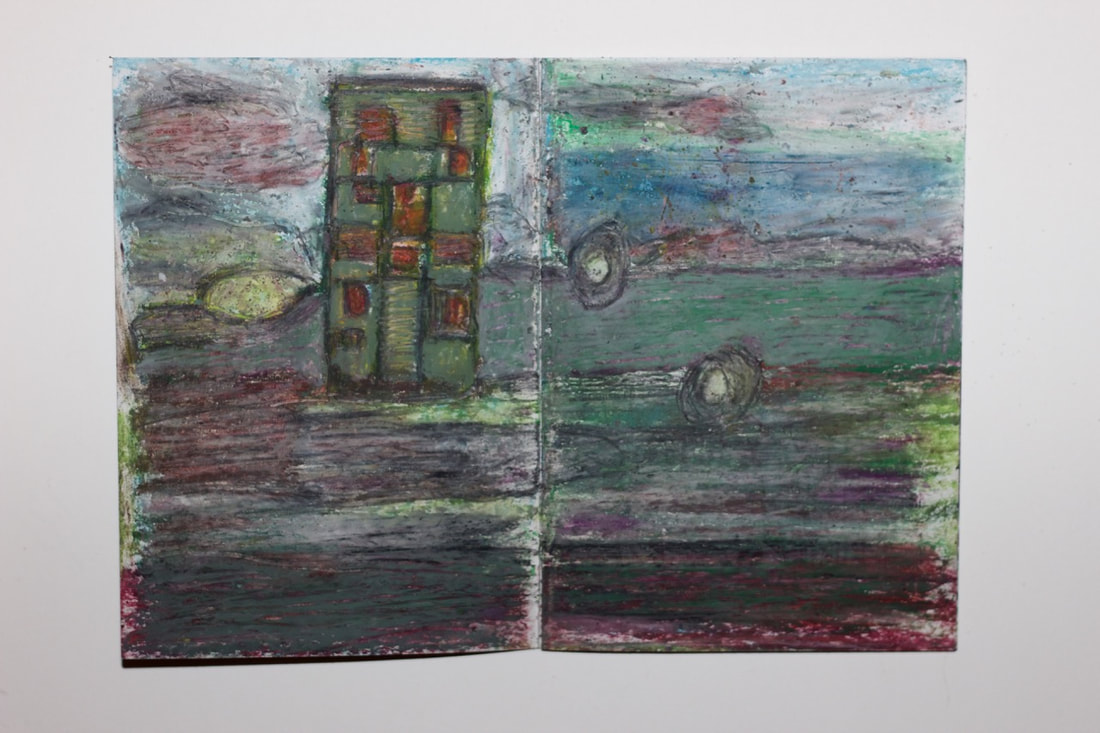











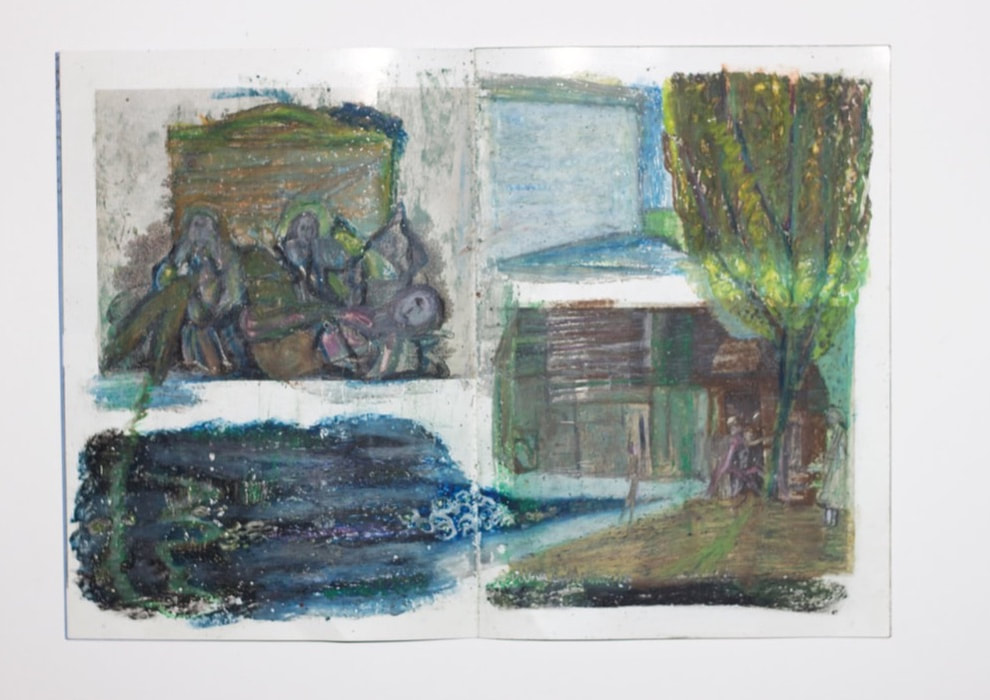
















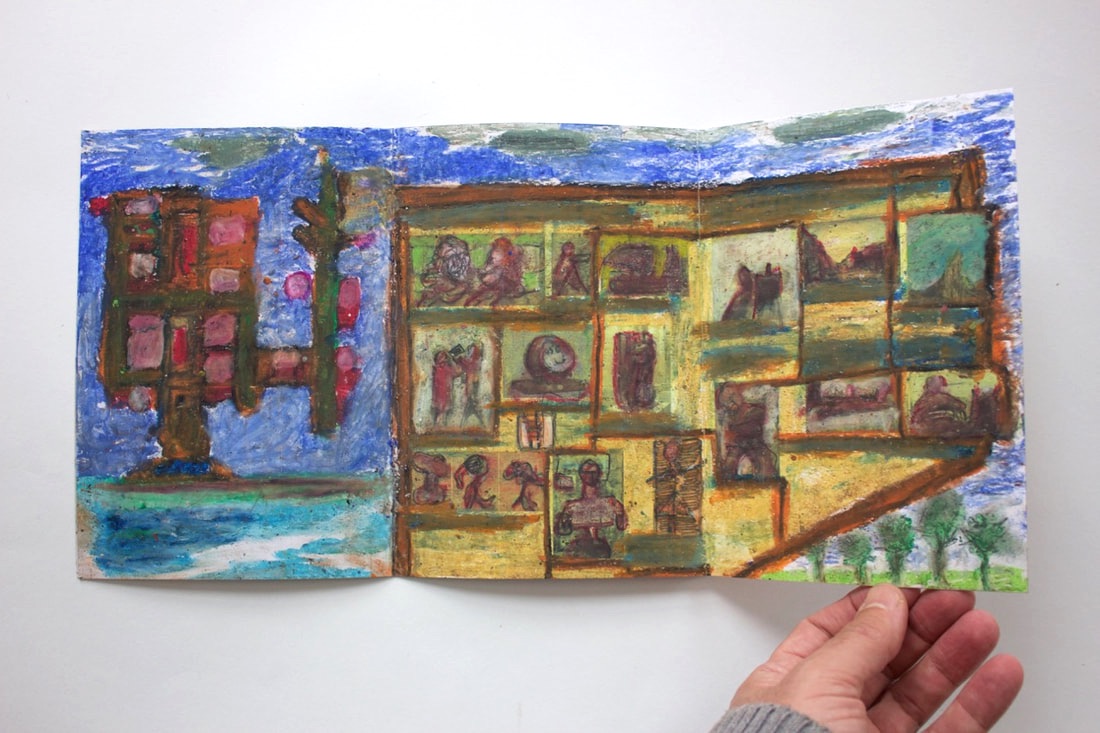






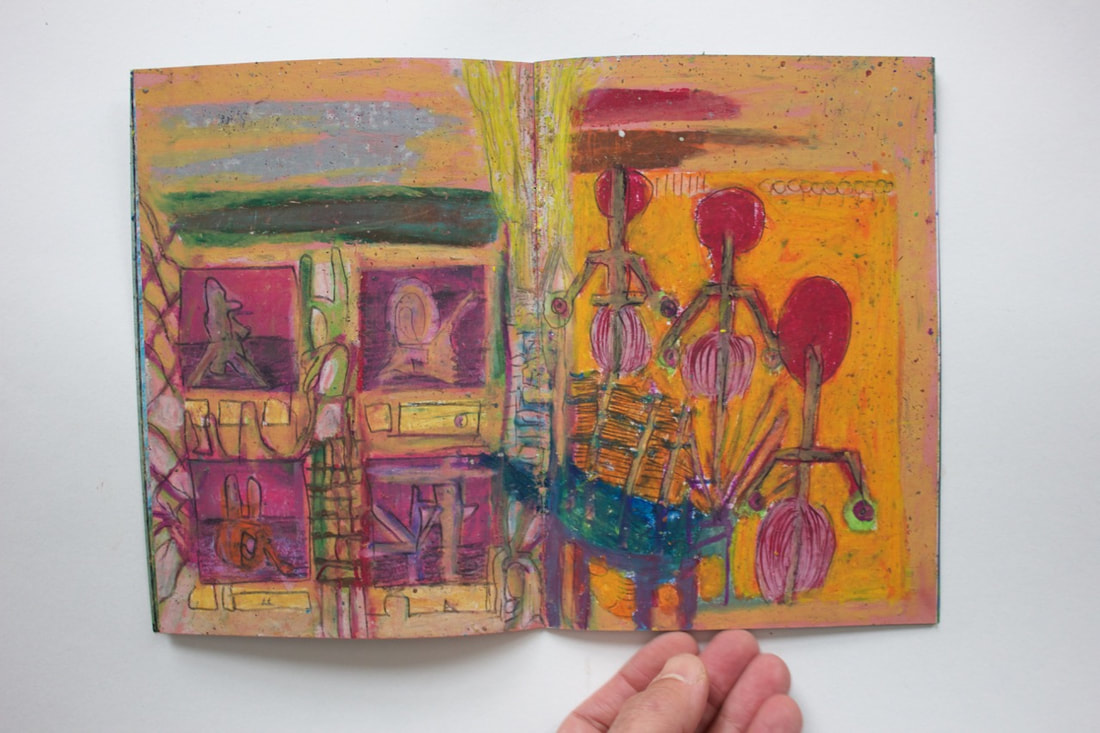
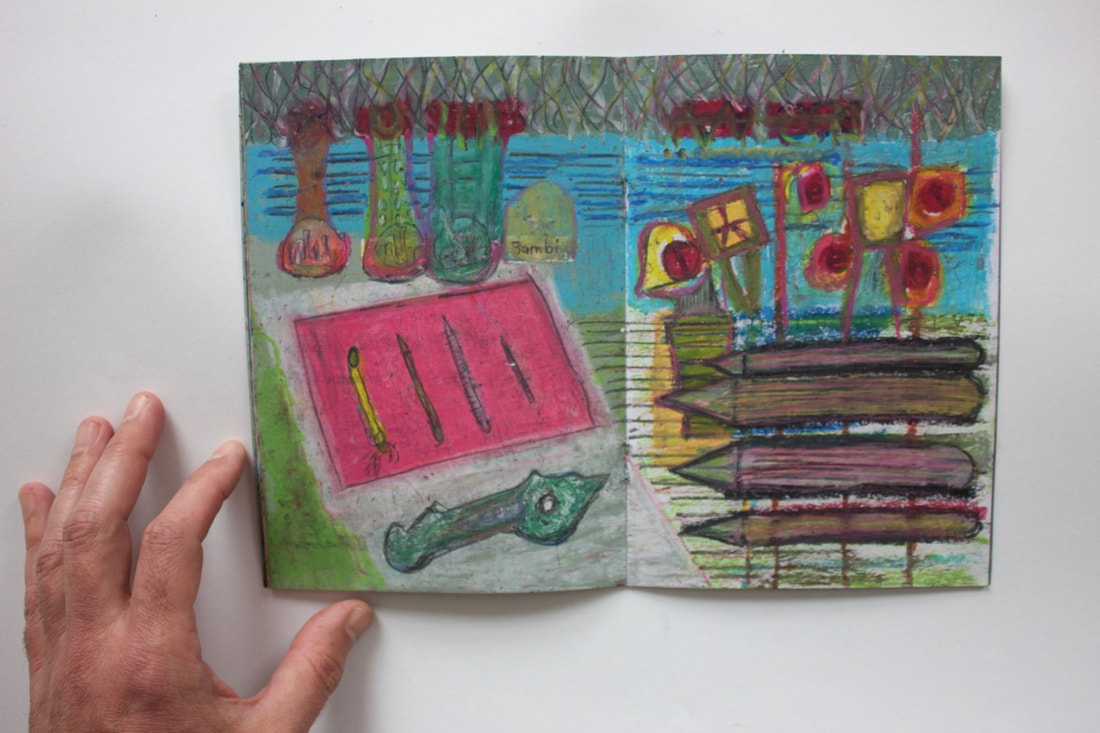








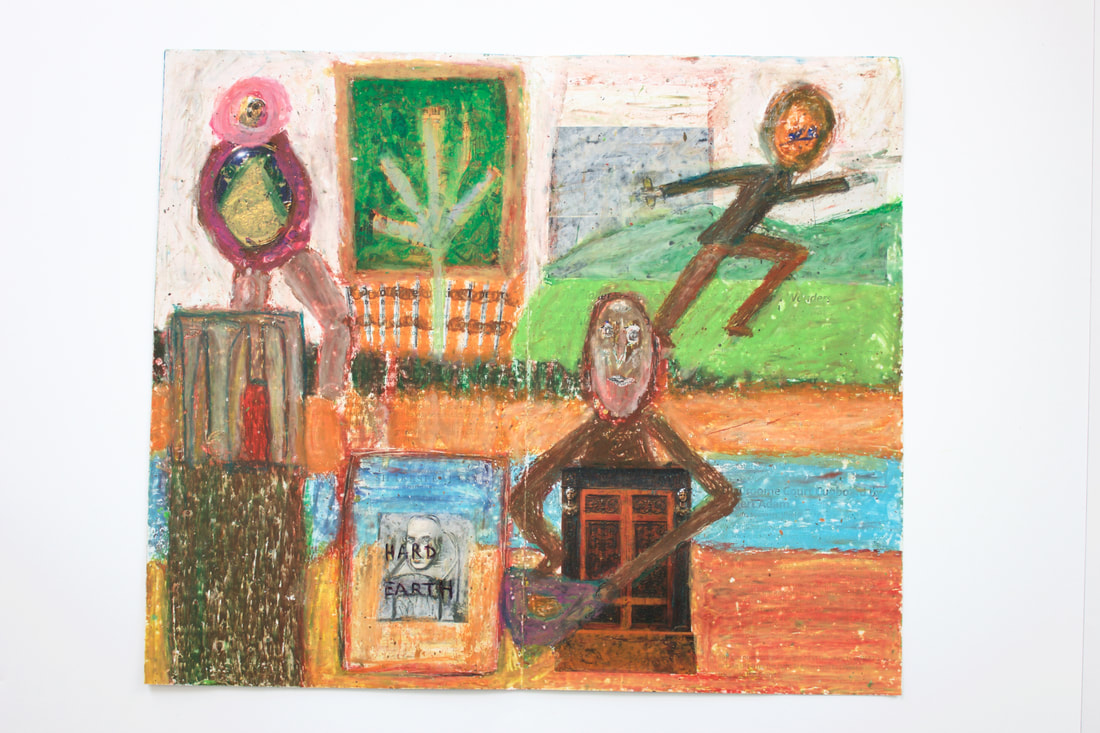










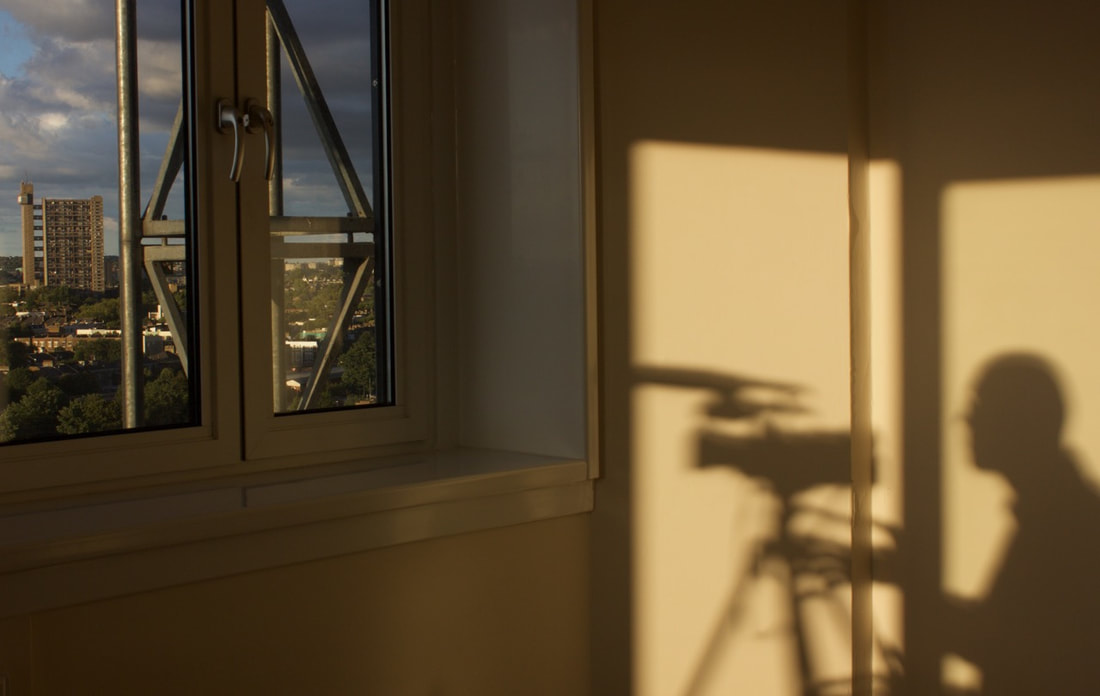



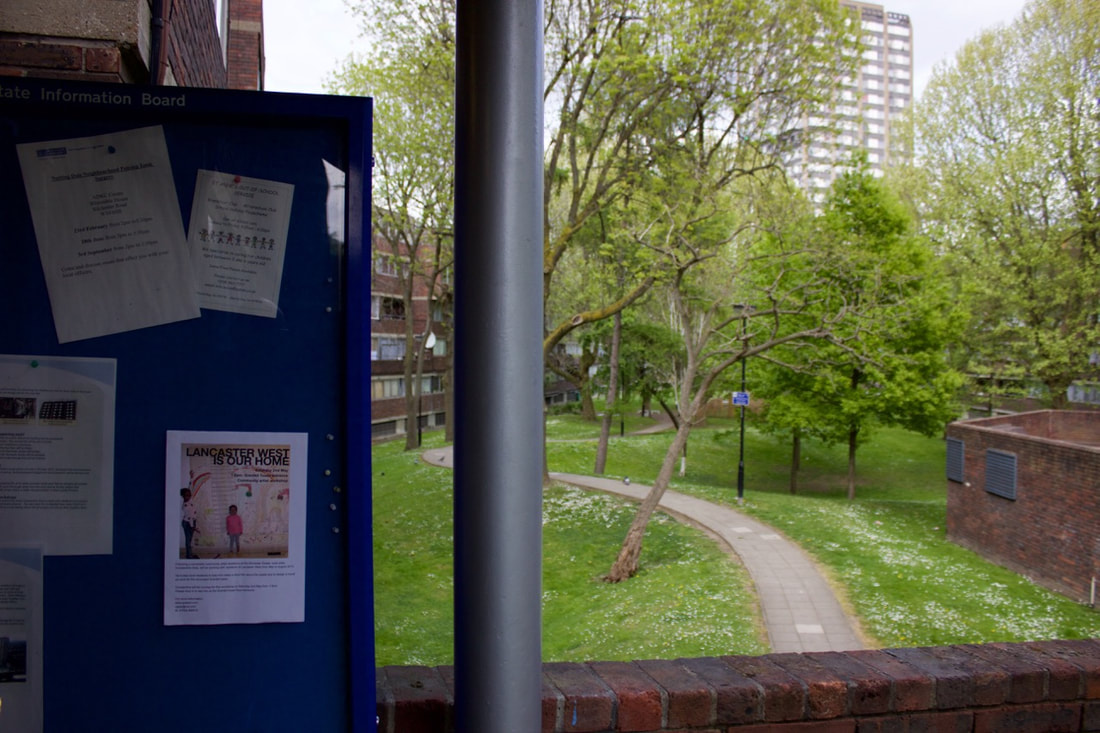



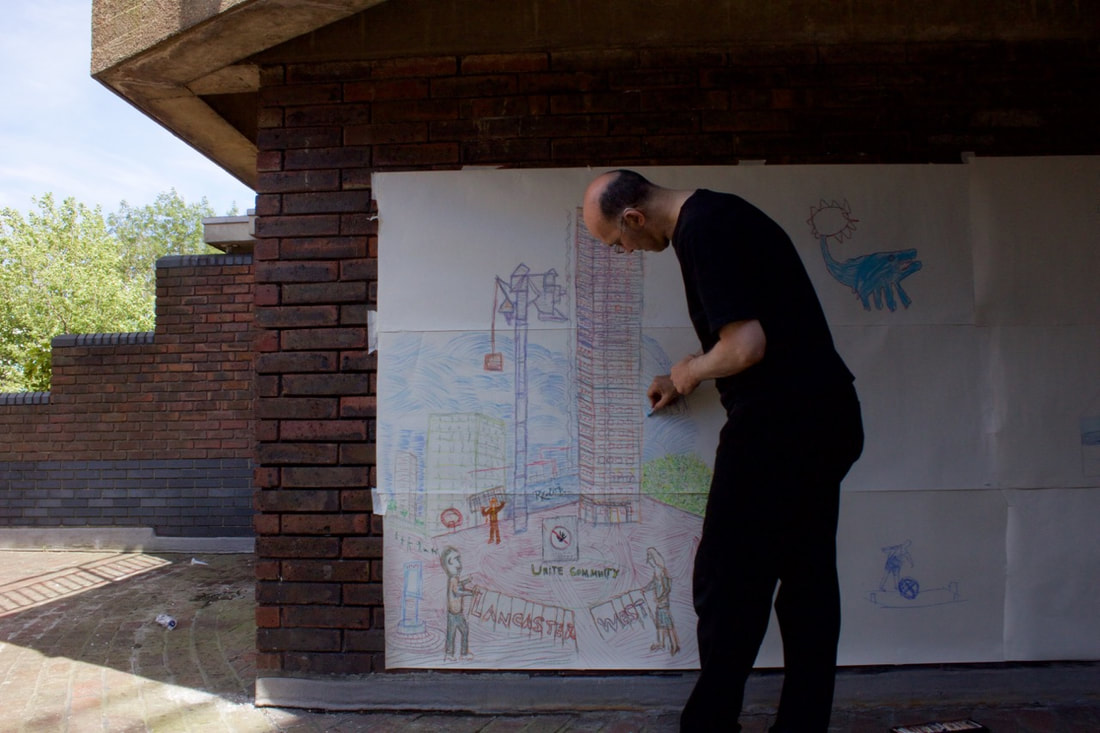

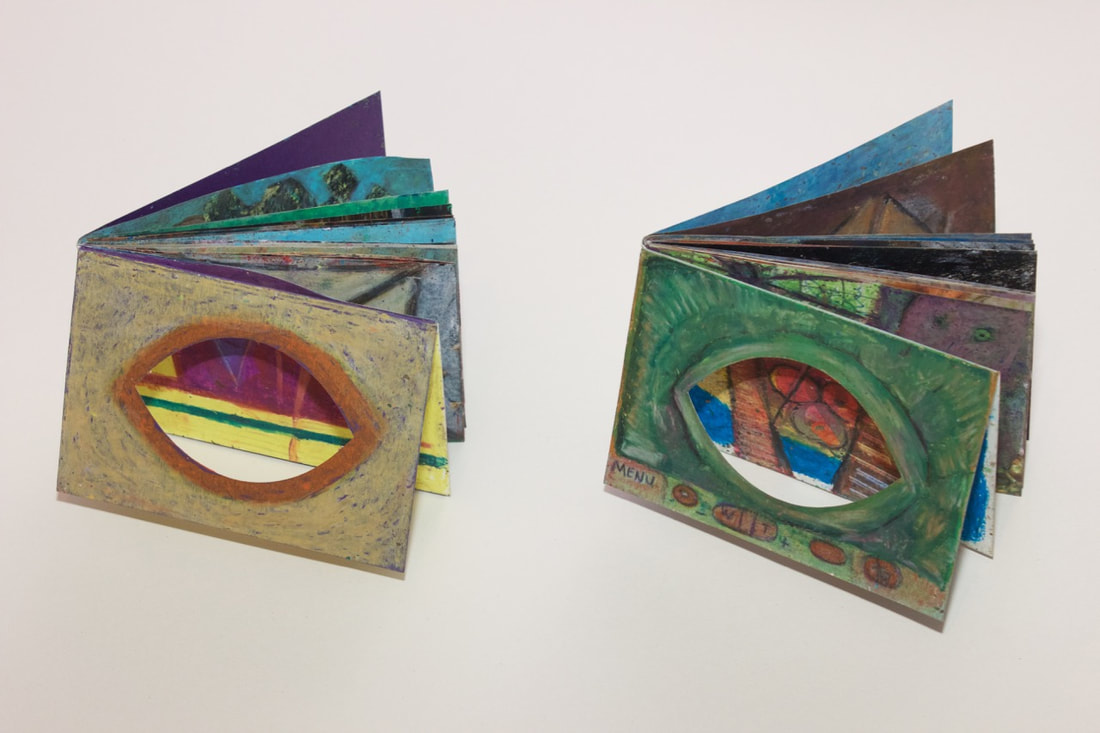












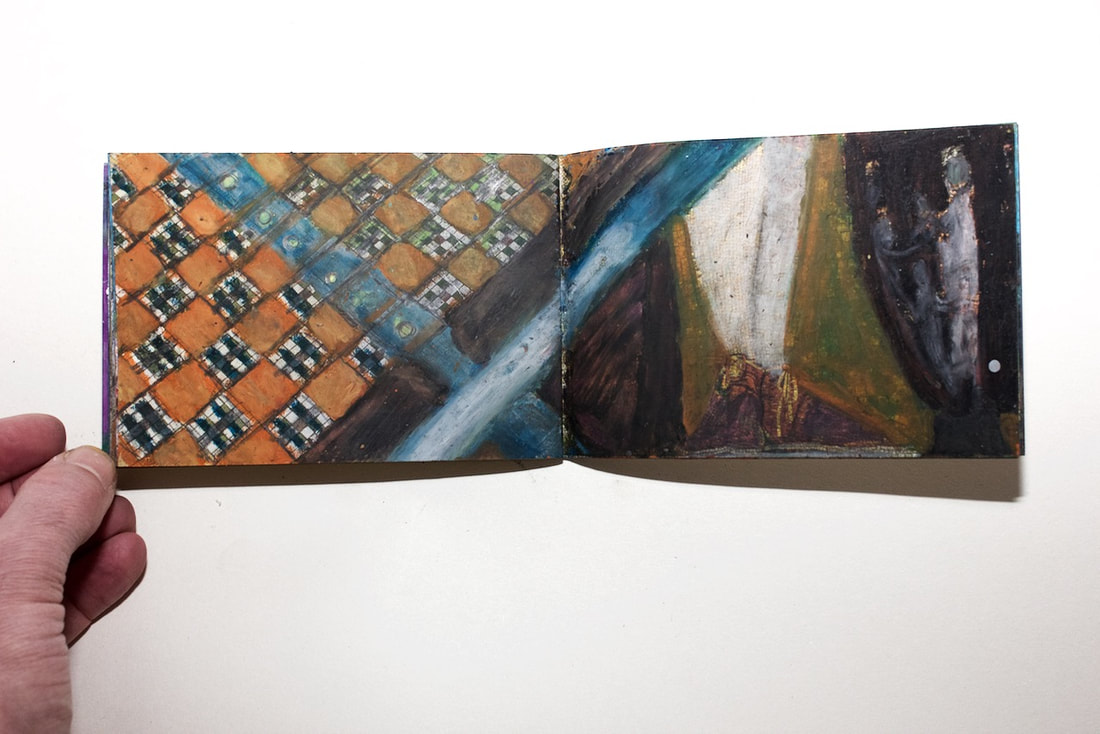












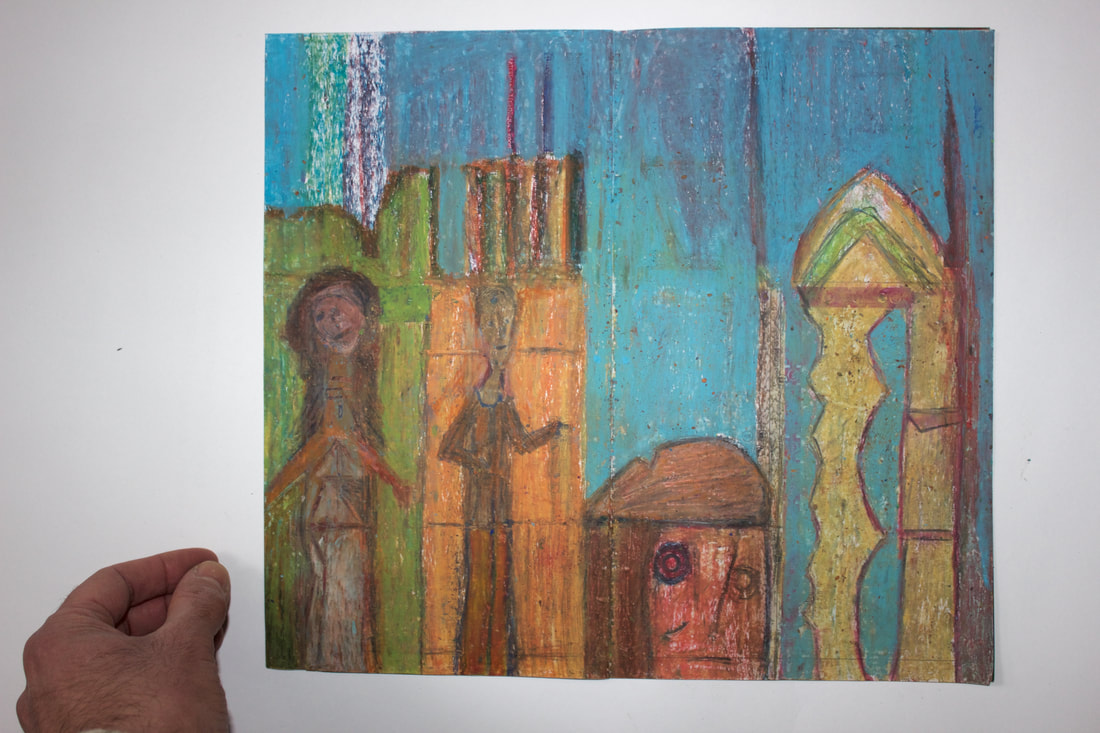


 RSS Feed
RSS Feed
